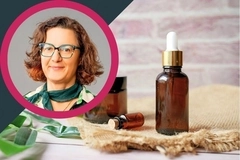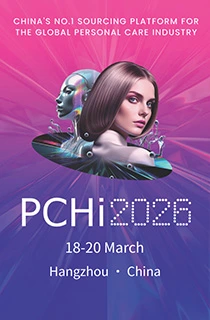Counterfeit cosmetics now an industry-wide issue, warns transnational alliance

Counterfeit cosmetics and toxic dupes are rising as a result of the e-commerce and social media boom. Dupes used to be a black market for luxury goods, but have now spread across the cosmetics industry, as consumers can buy personal care products from various brands for “a fraction of the price.”
“Dupe” can also refer to an affordably positioned brand “knocking off” a higher-end product. A popular example is E.L.F.’s Halo Glow Liquid Filter, which is noticeably similar to Charlotte Tilbury’s Hollywood Flawless Filter. In these cases, both products are made by established companies and go through proper safety testing before hitting the market.
However, illegal dupes mimic the likeness of the original products, passing themselves off as the real thing, without undergoing proper safety measurements.
Personal Care Insights speaks with Jeffrey Hardy, director-general at the Transnational Alliance to Combat Illicit Trade, about the health dangers these products pose and the industry’s responsibility in actively monitoring their brands on e-commerce platforms.
“Brands are the subject matter experts for their products and should actively and constantly monitor e-commerce platforms for potential counterfeit goods,” says Hardy.
“The consumer also needs to play a role in protecting themselves. The old adage that ‘if it sounds too good to be true, then it probably is’ applies here. If a product is offered with a significant discount or at a price point significantly lower than other offers online, it should raise a red flag of potential counterfeiting.”
Stagnating issue
As e-commerce has become more widespread, the volume of counterfeit products on online platforms has also “unsurprisingly” increased, says Hardy.
He explains that what was mainly an issue for luxury brands and technology companies is now becoming an industry-wide issue.
“Counterfeiters are increasingly targeting FMCG because it is relatively easy to enter the online supply chain via the third-party selling model on e-commerce platforms,” says Hardy.
 Social media may be used to promote counterfeit products on apps or e-commerce platforms.A report from the European Consumer Organization published in February this year investigated cosmetics sold on Temu. It found that between 42% to 100% of product ingredients did not match those on the lists or had only Chinese labels, giving a higher chance of illegal substance use.
Social media may be used to promote counterfeit products on apps or e-commerce platforms.A report from the European Consumer Organization published in February this year investigated cosmetics sold on Temu. It found that between 42% to 100% of product ingredients did not match those on the lists or had only Chinese labels, giving a higher chance of illegal substance use.
Meanwhile, social media may be used to promote counterfeit products available on apps or e-commerce platforms. Hardy explains that social media will sometimes redirect consumers via links to stand-alone fraudulent websites that supply counterfeit goods or conduct phishing attacks, tricking individuals into accessing sensitive data.
“The counterfeiters target a wide range of personal care products, including products applied to the skin such as moisturizers, makeup, sunscreens, and products for hair and oral health.”
He stresses that if a particular brand has equity with consumers, it is a potential target for counterfeiters. “Rights holders spend considerable resources on screening programs to identify and take down listings of counterfeit goods.”
Harming people and brands
According to an Organisation for Economic Co-operation and Development report published earlier this year, China dominates the counterfeit cosmetics trade. The report found a high influx to the EU and an unusual trade flow from Morocco, which ranked 10th globally between 2020 and 2021.
We spoke with the report’s authors, who told us that the amount of counterfeit cosmetics tracked is “only a fraction of the illicit trade,” and that consumer health is often sacrificed for profit.
Hardy tells us everyone feels the impact of fake cosmetics and consumer health goods.
“Most importantly, the consumer has a product which has been produced with the cheapest possible ingredients, in typically unsanitary conditions, often with no active ingredients such as zero SPF protection in sun screen products, and sometimes with potentially harmful levels of impurities and toxins,” he says.
 For the industry, companies lose a sale, but more importantly, the reputation and equity of the brand are threatened.For the industry, companies lose a sale, but more importantly, the reputation and equity of the brand are threatened. This is particularly true if the consumer thinks the product is genuine and, therefore, loses trust in the brand.
For the industry, companies lose a sale, but more importantly, the reputation and equity of the brand are threatened.For the industry, companies lose a sale, but more importantly, the reputation and equity of the brand are threatened. This is particularly true if the consumer thinks the product is genuine and, therefore, loses trust in the brand.
“Counterfeits also impact the distributors and retailers of genuine products because they struggle to compete against the lower-priced counterfeits,” explains Hardy.
Last year, data from the European Union Intellectual Property Office suggested the cosmetics industry lost €3 billion (US$3.26 billion) (4.8 % of sales) due to counterfeit products.
“Everyone loses from an environmental perspective because counterfeiters adhere to zero environmental standards regarding product production, use, and recycling. There is no circular economy with counterfeiting,” Hardy adds.
Authenticity check
A dupe should be reported to the brand immediately so they can investigate. Hardy argues that consumers are best at spotting counterfeits because they tend to smell, look, or feel different from the products they use regularly.
“Consumers must be wary of overly cheap prices when shopping online. They should try to check the origin of the goods, read reviews before purchasing from a seller, and be extremely wary if they use social media and are redirected to a stand-alone website. If they are not buying directly from the brand, consumers are advised to purchase from reliable, well-established websites and retailers in their country.”
Hardy further advises consumers to check the seller’s location. “Why would a product manufactured in the US, being sold in the US to a US resident, come from China?”
 Hardy advises consumers to read seller reviews and check the seller’s location.He adds that the e-commerce platforms must do more to verify sellers’ identities and permanently remove offenders.
Hardy advises consumers to read seller reviews and check the seller’s location.He adds that the e-commerce platforms must do more to verify sellers’ identities and permanently remove offenders.
“This should include sharing data on repeat offenders between the platforms. Brick and mortar stores are obligated to ensure that the goods they sell are genuine — meaning they have to ensure that the supply chain is secure,” says Hardy.
“The same should apply to any e-commerce platform utilizing the third-party selling model, particularly because the platforms typically use algorithms to promote the lowest priced products, meaning that the cheaper counterfeit product could be the first listing the consumer sees.”
“Many of the platforms have developed numerous useful tools to assist brands to protect their trademarks, but they also need to develop better tools for consumers to verify the origin of goods and protect themselves from potentially harmful counterfeit products,” Hardy concludes.
Meanwhile, countries and regions have taken steps to stop the trade of fake cosmetics.
Nigeria recently announced the development of a QR system and digital platform to verify product authenticity and trace movements throughout the supply chain. Last year, the UK launched its “Choose Safe not Fake” campaign to raise awareness and respect intellectual property.



















